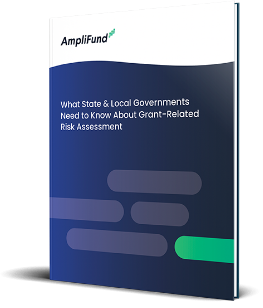The ~$5.8 trillion budget proposal President Biden put forward last week would increase Federal funding for a wide range of initiatives at the state and local government level. According to Michael Wallace, the National League of Cities’ Program Director for Community and Economic Development, there are “increases in almost every area for cities and towns” in the 2023 budget plan.
This planned spending would be in addition to American Rescue Plan Act (ARPA) and Infrastructure Investment and Jobs Act (IIJA) funding, helping to address gaps in programs that may have not been prioritized as highly for those funding streams in the past.
Some highlights and areas for potential funding increases for states, local governments, and tribes beginning October 1, 2022, are as follows:
- $35 billion housing supply fund to provide state and local grants to help increase the amount of affordable housing in addition to a $450 million increase, to $1.9 billion, for HOME Investment Partnerships funding.
- $3.5 billion for Homeless Assistance Grants, including $3.2 billion in Continuum of Care Program funding and $290 million for Emergency Solutions Grants.
- Half of the EPA’s $12 billion in funding for 2023 is intended for state and local governments.
- $160 million in grants to reduce lead in drinking water.
- $240 million for programs focused on preventing sewer overflows and promoting storm water reuse.
- $230 million for the Port Infrastructure Development Program, including $1.7 billion in spending for the Harbor Maintenance Trust Fund.
- $9.9 billion to improve the core immunization program, expand public health infrastructure, strengthen the public health workforce, modernize public health data collection, increase capacity for forecasting and analyzing future outbreaks, and conduct studies on long COVID.
- $3.3 billion increase for IDEA Grants to states to increase support for children with disabilities.
- $1 billion in sustainable funding to help schools increase the number of school counselors, psychologists, social workers, and other health professionals.
- $502 million to weatherize and retrofit low-income homes including $100 million for a new LIHEAP Advantage pilot program to electrify and decarbonize low-income homes.
- $260 million to support energy efficiency improvements to USDA-assisted multifamily homes.
- $150 million to electrify Tribal homes and transition Tribal colleges and universities to renewable energy.
- $80 million for a new Grid Deployment Office.
- $537 million to Community Oriented Policing Services (COPS) hiring grants which allows police departments to hire both traditional and nontraditional policing hires.
- $533.5 million in grant funding for the Edward Byrne Memorial Justice Assistance Grant program.
- $1.8 billion in the Forest Service and Department of the Interior to strengthen the Federal firefighting workforce, increase capacity, and improve firefighter compensation.
- An increase to $9.1 billion in mandatory funding for the Indian Health Service (IHS). The budget also shifts this funding from discretionary to mandatory.
The budget also includes funding intended to promote hiring surges at the federal, state, and local government level in an effort to increase the number of public sector employees over the course of the next few years. This is a response to the labor shortage that the public sector has faced over the course of the pandemic.
Managing multiple funding streams can feel overwhelming, but with the right support, you will have an opportunity to make an enormous impact in your community. Is your organization ready for this influx of funding? We have a checklist to help you determine if your team could benefit from a technology tool to manage your awards, as well as resources to help you maintain your compliance along the way.
Photo by lovelyday12 from Canva





